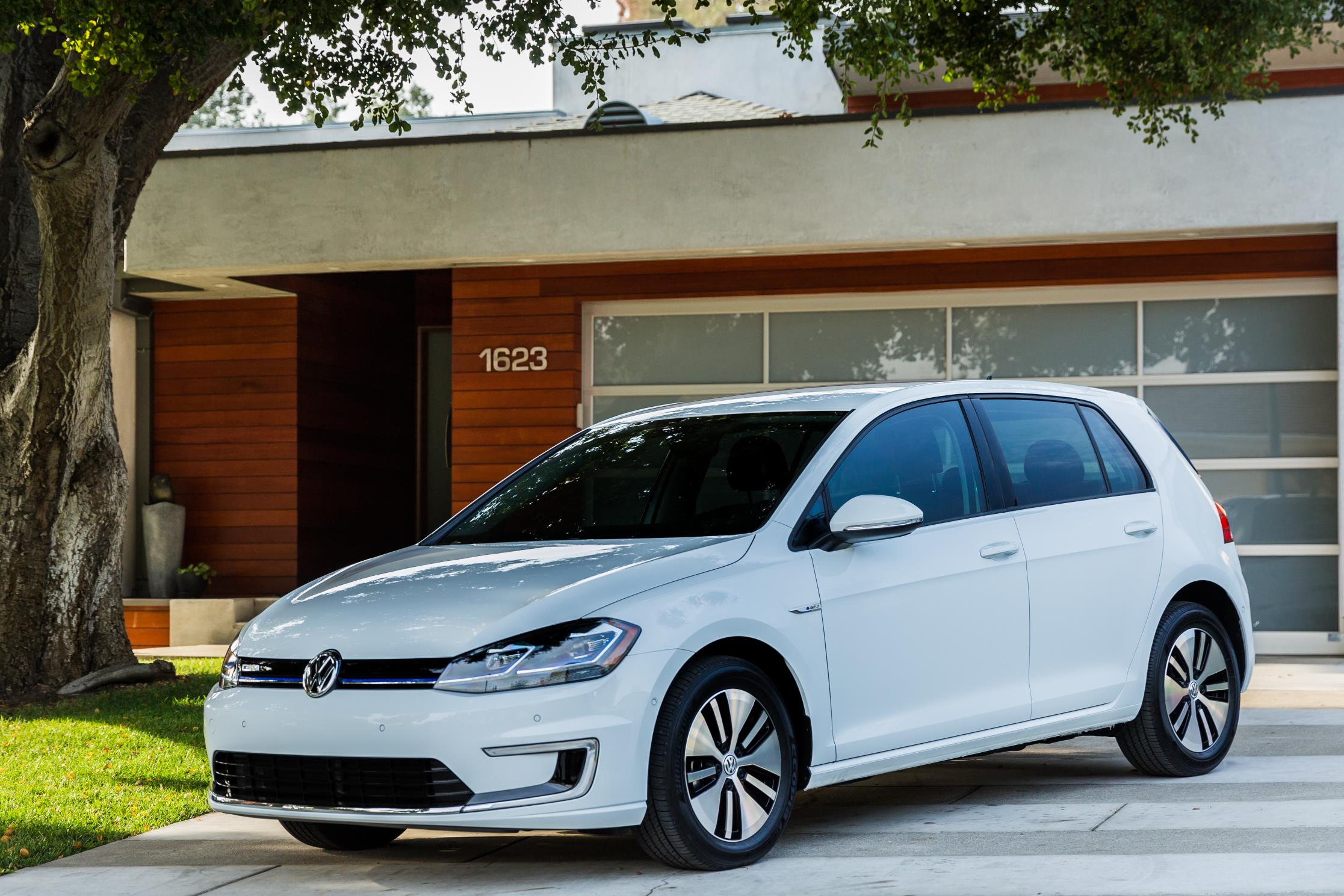
- EPA releases official fuel-economy numbers for the new e-Golf
- Increased battery capacity gives 2017 e-Golf an EPA-estimated range of 125 miles—a 50 percent increase over the previous model year
- EPA-estimated 126 city MPGe and annual fuel cost of $550
- Upgraded electric motor produces 134 horsepower and 214 pound-feet of torque
Herndon, VA, February 22, 2017 — Volkswagen of America, Inc., is pleased to announce fuel economy figures for the 2017 e-Golf. Compared to its predecessor, the new e-Golf offers an improved EPA-estimated range and fuel economy, as well as more power.
For 2017, Volkswagen is using a new lithium-ion battery with an increased energy capacity of 35.8 kWh from 24.2 kWh. The new battery helps increase the vehicle’s range from an EPA-estimated total range of 83 miles to 125 miles on a single charge. The 7.2 kW on-board charger is now standard on both SE and SEL Premium trims, which enables the battery to be charged in less than six hours at a 240V charging station. When equipped with DC Fast Charging (optional on SE, standard on SEL Premium), the battery can be charged to 80 percent within an hour at a DC fast charging station.
Improved battery chemistry also helps improve the overall fuel economy of the 2017 e-Golf. For city driving, the EPA estimated fuel economy is 126 MPGe; highway driving is rated at 111 MPGe, and combined city/ highway at 119 MPGe, improved over the 2016 EPA estimates of 126, 105 and 116, respectively. The 2017 e-Golf EPA estimates are the best in the Compact Class, as defined by the EPA.
The electric motor on the 2017 e-Golf has been upgraded as well. Where the 2016 e-Golf utilized an 85 kW electric motor developing 115 horsepower, the new 100 kW electric motor develops 134 horsepower. At the same time, the maximum torque of the electric motor has been boosted from 199 pound-feet to 214 lb-ft. The 2017 e-Golf runs zero to 60 mph faster than its predecessor—now in just 9.6 seconds—and its top speed increases to 93 mph.
In addition to these engineering improvements, the 2017 e-Golf is wallet friendly. Using 13 cents per kilowatt-hour, the EPA has estimated an annual fuel cost of just $550.
The 2017 e-Golf goes on sale this Spring. Pricing will be announced closer to market introduction.
Notes:
This press release and images of the 2017 e-Golf are available at media.vw.com. Follow us @VWNews.
“VW”, “Volkswagen”, all model names and the Volkswagen logo are registered trademarks of Volkswagen AG. All other trademarks are the property of their respective owners.
This information is preliminary and subject to change.
Features and technical data apply to models offered in the USA. They may differ in other countries.
The e-Golf vehicle is only available at participating dealers in select states.
2017 e-Golf EPA estimated range is 125 miles. 2017 e-Golf EPA estimates: 126 city/111 highway MPGe. Actual mileage will vary and depend on several factors including driving and charging habits, accessory use, weather and topography, battery age, and vehicle condition. Battery capacity decreases with time and use. See owner’s manual for details.
Charge in under 6 hours is the approximate time with available 240V home charging wall box, purchased separately. Actual charge time will vary and depends on several factors including battery age and vehicle condition. Battery capacity decreases with time and use. See dealer or owner’s literature for limited warranty details.
Charges up to 80% in one hour requires charging at select DC fast charging stations. Frequent and consecutive high-voltage charging (including DC charging) can permanently decrease the capacity of the high-voltage battery. See owner’s manual for details.
Where stated, fuel economy values (MPGe) are EPA estimates. See www.fueleconomy.gov for details. Actual mileage will vary and depends on several factors including driving habits and vehicle condition.
EPA estimated annual fuel costs are based on 45% highway, 55% city driving, 15,000 annual miles and current fuel price.
